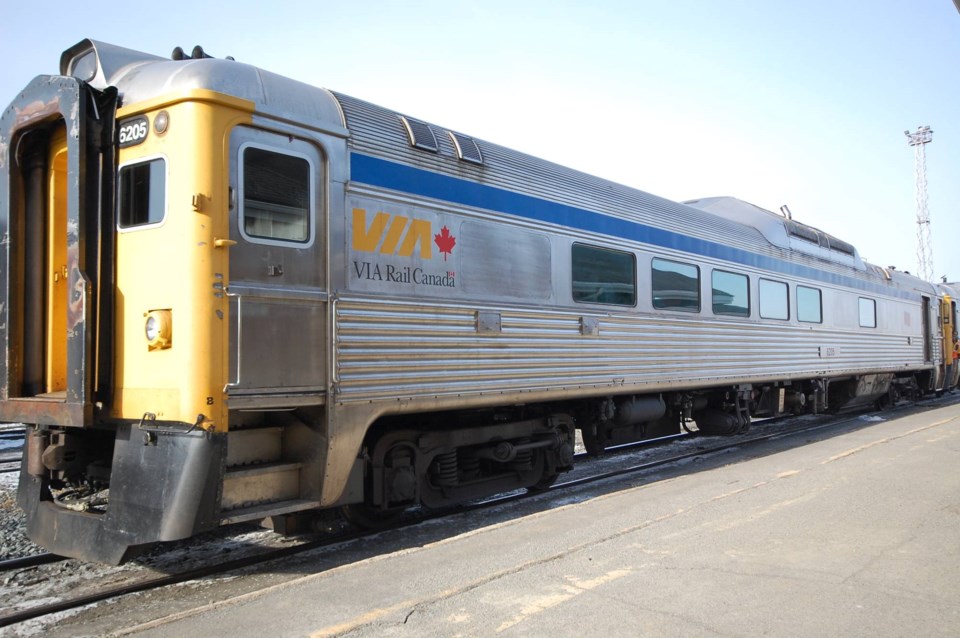A railway buff converses with passengers as he makes his way to the rear of the Budd car to savour a moment in North America's only original baggage car built by the Budd Company in the early 1950s. Inching his way through a maze of individuals seated on backpacks and nudged up against canoes in the baggage car, he pauses to peek out of the window to catch a glimpse of the Spanish River en route to Chapleau.
For Jimmy Cockburn, the train's conductor, this milieu of passengers is a familiar one.
"Rail buffs are always looking for something old, something rare," Cockburn says. "We get a lot of rail buffs on the Budd car, particularly since (the baggage car) is the only survivor of 10 original cars built in the '50s."
Cockburn, who was raised in Chapleau, has been working with the Canadian Pacific Railway for the past 36 years in both freight train service and passenger train service, and, since the 1980s, has been conducting Budd train operations.
The Budd car, a tourist passenger train, provides transportation along the CPR line to remote areas between Sudbury and White River, with a daily stop in Chapleau.
Although not owned by CPR, the Budd car is operated by Via Rail on the CP rail line, he notes.
When CPR decided to bring in diesel engines and remove steam engines from their fleet in the early 1950s, the freight trains were the first to undergo the change, followed by long-distance passenger trains.
The Budd Company of America decided to make a service that was "quick on the stop and start," one which would provide a link to remote areas which, along the route, typically had many stops along the way, Cockburn says.
The uniqueness of the Budd car is the placement of the motor underneath the car, thus eliminating the need for a locomotive, he adds. This allows the Budd car to operate as a self-contained unit operated from one controlled location.
The first Budd cars were introduced in April 1955 and originally ran from Sudbury to Fort William, but the route has since been scaled down to provide service from Sudbury to White River.
In 1990, the Via Transcontinental train discontinued service on the CP line and converted operations to the Canadian National rail line. During the 1940s, four transcontinental passenger trains operated along the route daily, he says. But each time a highway or new road was developed to a community, passenger service was downsized. The Budd cars remained as part of the remote service VIA Rail provides, he adds.
Since the late 1800s the railway has provided a vital link to remote areas of Northern Ontario. This still remains the case in some areas where rail access is the only point of access, he adds. For a community like Chapleau, the Canadian Pacific Railway, which started the town in 1885 by building the rail line, has been a major contributor of jobs to the area since its early beginnings, he says.
Chapleau is located on one of the first three transcontinental lines built across Northern Ontario.
The changeover to diesel engines around 1953 saw the development of a diesel shop in Chapleau. Cited as an ideal location for the shop due to its central location between Thunder Bay, Toronto and Montreal, Chapleau became headquarters for engine maintenance and repairs, resulting in the creation of over 100 jobs in the community, he explains.
However, as diesel engines evolved and required less servicing, operations downsized and the diesel shop was forced to close its doors in the late 1960s.
CPR still continues as one of the major employers in Chapleau employing about 220 people in the community.
CPR operations in Chapleau include train servicing, maintenance of way and car repair.




